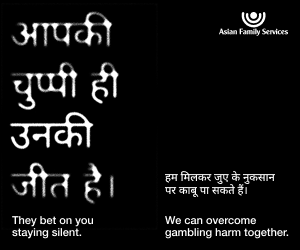3 In 5 Kiwis On Jobseeker Benefit Have Been On Welfare For Over A Year
-4.jpg?width=740&height=400&name=Untitled%20design%20(1)-4.jpg)
Data from the Ministry of Social Development (MSD) reveals more than half of the 189,000 Kiwis on the Jobseeker benefit have been receiving it for over a year. Prime Minister Christopher Luxon recently said his government will put an end to the "free ride" for beneficiaries not meeting their obligations, emphasising they have a commitment to break the cycle of welfare dependency.
Luxon asserted that while efforts would be made to assist people in finding employment, those not cooperating would no longer enjoy the free ride. He expressed support for increased use of sanctions as a means to encourage beneficiaries to transition away from the benefit.
The most recent MSD data from the previous year indicates 378,711 people in New Zealand are receiving a "main benefit," encompassing emergency, Jobseeker, sole parent, youth, or supported living payments. Of these, 189,798 individuals are on a Jobseeker benefit, each with specific obligations.
The number of people on a main benefit has been on the rise since early 2023. Nearly three in every five people receiving Jobseeker support, equivalent to 108,957 people, have been on it for at least a year, as per MSD data.
Breaking down the demographics, a majority of Jobseeker payment recipients are male (107,130), with the most common age group being 25-39 (60,561). Regionally, Northland has the highest percentage of individuals on Jobseeker support for over a year (63 per cent), followed by the West Coast (61 per cent) and Waikato (60 per cent).
The Jobseeker payment further categorises recipients into "work-ready" individuals seeking or preparing for work and those with a medical condition or disability affecting their ability to work. Among those with medical conditions or disabilities, the most prevalent issues are psychological or psychiatric conditions (40,479). Similar to overall main benefit figures, the number of people receiving financial support for these reasons has steadily increased since mid-2022.
The estimated time for work-ready Jobseeker recipients on income support until retirement age has surged by 23 per cent since 2019, posing a potential strain on government finances and trapping thousands in poverty due to a slowdown in the benefits system.
Long-term estimates for individuals on youth benefits and sole-parent support have seen even more substantial increases.
Data from the Ministry of Social Development (MSD) reveals more than half of the 189,000 Kiwis on the Jobseeker benefit have been receiving it for over a year. Prime Minister Christopher Luxon recently said his government will put an end to the "free ride" for beneficiaries not meeting their...
Data from the Ministry of Social Development (MSD) reveals more than half of the 189,000 Kiwis on the Jobseeker benefit have been receiving it for over a year. Prime Minister Christopher Luxon recently said his government will put an end to the "free ride" for beneficiaries not meeting their obligations, emphasising they have a commitment to break the cycle of welfare dependency.
Luxon asserted that while efforts would be made to assist people in finding employment, those not cooperating would no longer enjoy the free ride. He expressed support for increased use of sanctions as a means to encourage beneficiaries to transition away from the benefit.
The most recent MSD data from the previous year indicates 378,711 people in New Zealand are receiving a "main benefit," encompassing emergency, Jobseeker, sole parent, youth, or supported living payments. Of these, 189,798 individuals are on a Jobseeker benefit, each with specific obligations.
The number of people on a main benefit has been on the rise since early 2023. Nearly three in every five people receiving Jobseeker support, equivalent to 108,957 people, have been on it for at least a year, as per MSD data.
Breaking down the demographics, a majority of Jobseeker payment recipients are male (107,130), with the most common age group being 25-39 (60,561). Regionally, Northland has the highest percentage of individuals on Jobseeker support for over a year (63 per cent), followed by the West Coast (61 per cent) and Waikato (60 per cent).
The Jobseeker payment further categorises recipients into "work-ready" individuals seeking or preparing for work and those with a medical condition or disability affecting their ability to work. Among those with medical conditions or disabilities, the most prevalent issues are psychological or psychiatric conditions (40,479). Similar to overall main benefit figures, the number of people receiving financial support for these reasons has steadily increased since mid-2022.
The estimated time for work-ready Jobseeker recipients on income support until retirement age has surged by 23 per cent since 2019, posing a potential strain on government finances and trapping thousands in poverty due to a slowdown in the benefits system.
Long-term estimates for individuals on youth benefits and sole-parent support have seen even more substantial increases.










Leave a Comment